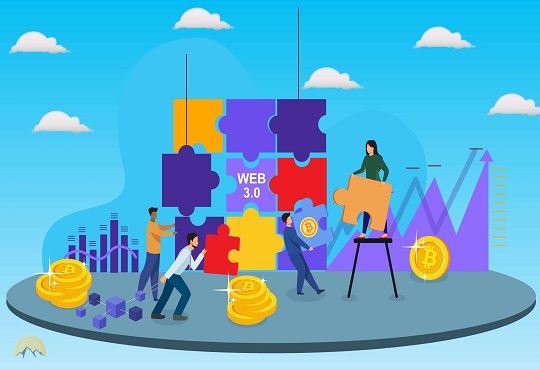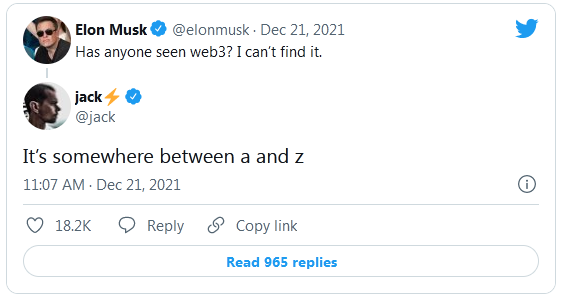How will web 3.0 transform the digital era
Abhrasnata Das | Friday, 08 April 2022, 13:52 IST

The internet has changed dramatically over the past two decades. In the decentralized read-only web 1.0, the websites were merely informational and comprised entirely static content that were only linked together by hyperlinks. However, with web 2.0 things were completely different, as the web transited from read-only to read and write, it became comprehensively centralized. Today, there are a handful of organizations like Google, Meta and Amazon, that shape and influence the experience of the users. Not to mention, in web 2.0 private data have become the commodity that fuels the big techs. Now coming to web 3.0, although Tim Berners Lee first conceptualized the idea of re-decentralizing the web in 2014, the iteration of web seems achievable only after streamlining of blockchain.
Web 3.0, still being a buzz word in the tech world, has gained mixed reactions from the modern tech leaders. Whereas tech giants like Jack Drosey and Elon Musk have directly attacked the idea of web 3.0 in their tweets. Google’s CEO, Sundar Pichai on the other hand, had a rather diplomatic tone. In a recent interaction with Hindustan Times, Pichai mentioned, “The Web is already secured and encrypted. However, Web 3.0 will be a democratic evolution of ideas.”

With the rise of blockchain based technologies such as cryptocurrencies, NFTs, Metaverse, and distributed ledger technology, Web 3.0 is getting ready to transform how businesses function and how internet users engage with the digital world. Having said that, in this article let's take a closer look at how web 3.0 will impact the future of web surfing in general and the virtual world as a whole.
Continuous Service
We all remember the last worldwide outage of Meta back in 2021, when the server of Meta was down for nearly 6 hours. Well, in the days of Web 3.0, server outage will be a thing of the past.
Due to decentralized data storage in Web 3.0, users will be able to access data in any scenario. They'll get many backups, allowing them to retrieve their data even if the server goes down. Furthermore, no organization or government agency will be allowed to stop any services or websites from operating. As a consequence, there will be less risks of account suspension and distributed service denial.
Furthermore, computational operations that were previously constrained to expensive data centers can be performed closer to, if not immediately at, the data collection place. This opens up new use cases where massive volumes of data will be analyzed in real time but are otherwise unavailable owing to bandwidth limits or transmission delays.
Data Monetization
Tech titans that have dominated the ecosystem of Web 2.0 and have made a fortune from tracking and monetizing user data. According to financial reports from 2021, the combined annual income of Alphabet, Amazon, Apple, Meta, and Microsoft is about $1.2 trillion, up more than 25% from the start of the pandemic in 2020.
Web 3.0, on the other hand, is set to transform the data ownership environment and return authority to users. The goal of Web 3.0 is to restore the privacy of personal information. It's part of a larger effort to offer people more control over their data ownership and monetization. Instead of firms collecting data for free, Web 3.0 encourages consumers to determine how they want to acquire and retain their data, as well as if and when they want to sell it.
In Web 3.0 users can juggle between universal settings, wherein they can opt to not share their data; to specific settings, where they can choose which data is worthy of sharing. Moreover, the users will also be compensated for the data that is shared.
Low Code Apps
Owing to the pandemic, businesses have realized the value of having a strong internet presence. Today, Mobile applications are one of the most significant virtual tools that a company should have since they are the closest thing to an in-store experience.
However, with Web 3.0, users can build their own programs or engage with the blockchain network because it is open to anyone. In the future any entity can easily develop a low-code or no-code app without any need for coding knowledge.
The Future Outlook
There is no doubt that the decentralized, secured, permissionless and Ubiquitous Web 3.0 has the potential to transform the future of computing. However, it must be noticed that Web 3.0 is still in a nascent stage. Patrick Parker, CEO of SaaS Partners, believes that it's going to take at least 5-10 years to scale Web 3.0 at mass level. In his web article, Parker also discussed the key aspects like cost and scalability issues that can impede the overall realization of Web 3.0.




